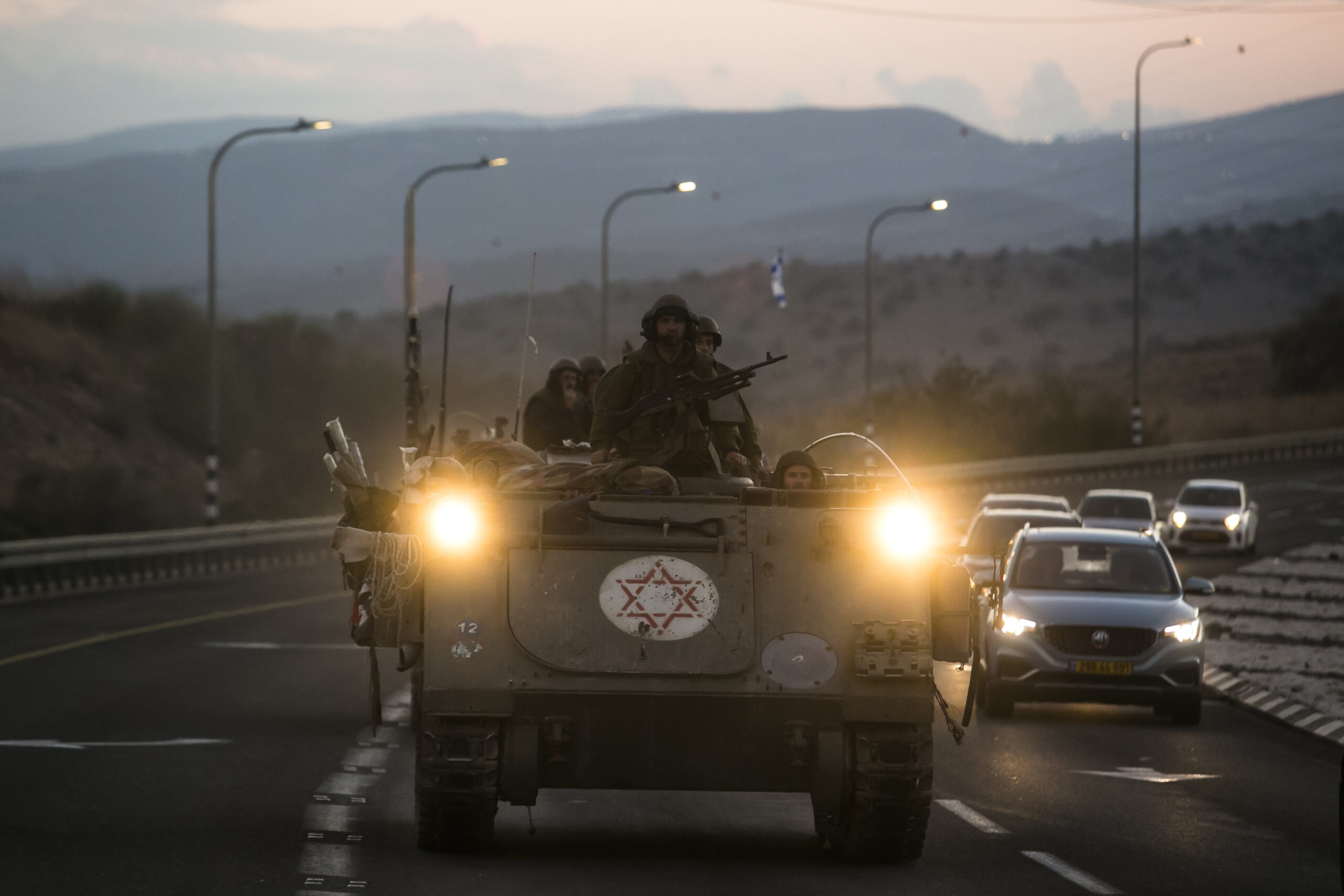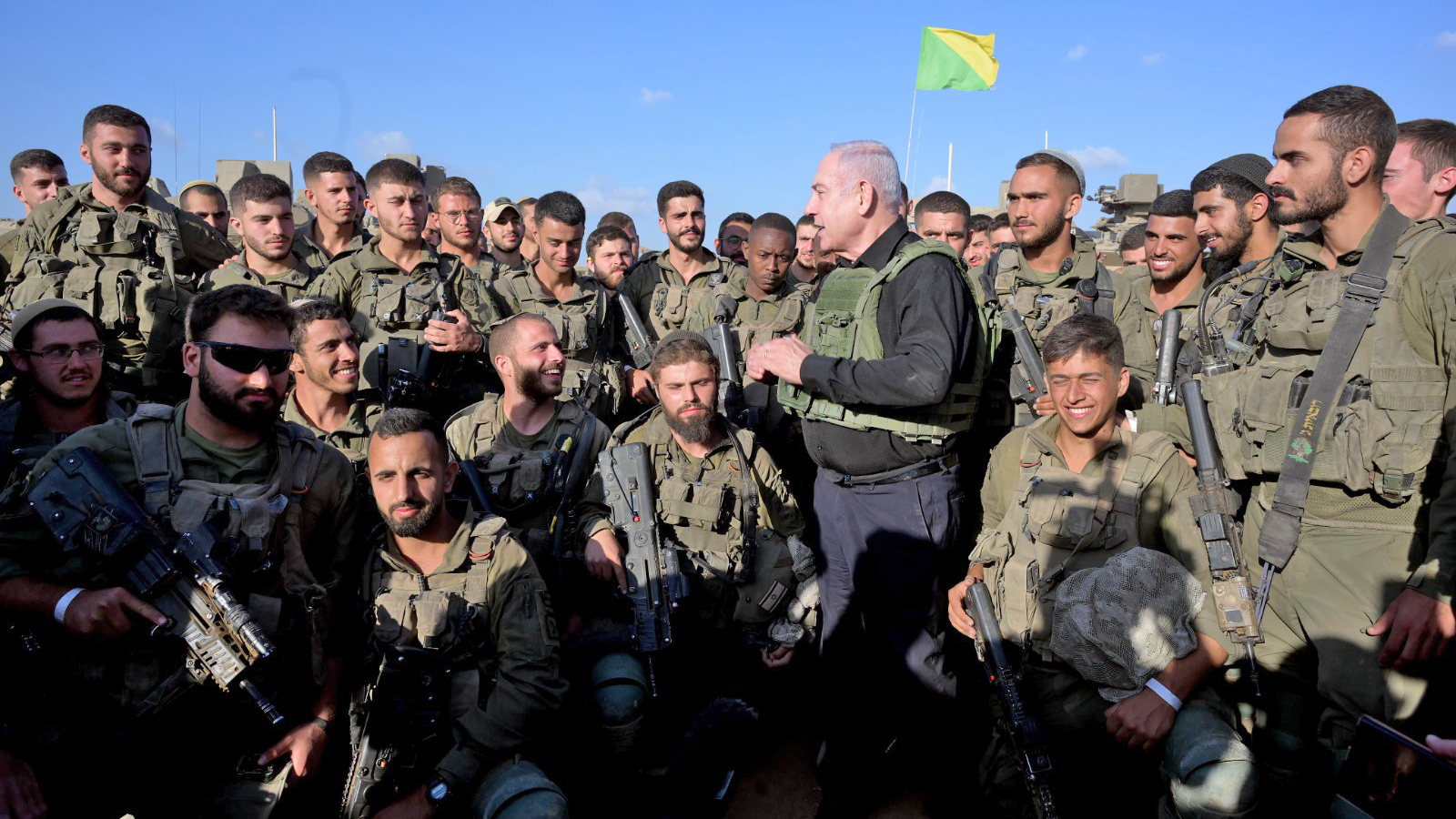As the Israel-Hamas conflict enters its 13th day, Israeli Prime Minister Benjamin Netanyahu has confirmed that he doesn’t expect the war to be over any time soon. “This is a long war, and we’ll need your continuous support,” Netanyahu said today, after talks with his U.K. counterpart, Rishi Sunak.
Sunak was visiting Jerusalem a day after U.S. President Joe Biden did, the British leader saying that his country “absolutely supports Israel’s right to defend itself in line with international law.” At least nine British nationals are now confirmed to have died and a further seven are missing after the Hamas on Israel on October 7, according to the U.K. government.
While Israel has so far not launched a full-scale ground offensive into Gaza, the Israel Defense Forces (IDF) continue to conduct extensive operations there, including prosecuting targets identified by Shin Bet, the Israeli internal security service. In a post on X, formerly Twitter, this morning, the IDF declared:
“The IDF continues to attack all the time throughout the Gaza Strip. During the last day, the IDF, directed by the Shin Bet, destroyed hundreds of Hamas terrorist infrastructures, dozens of which were attacked in the Sageya neighborhood. The hundreds of terrorist infrastructures that were attacked include anti-tank missile launch sites, tunnel shafts, intelligence infrastructures, operational headquarters, and other headquarters.”
There are also more signs that the Israeli ground campaign could be imminent, with the Israeli Minister of Defense Yoav Gallant telling troops on the Gaza border “You now see Gaza from afar, soon you will see it from the inside. The order will come.”
A further indication of Israel being ready to launch an offensive into Gaza was provided today by Israeli Economy Minister Nir Barakat, who told ABC News that the IDF has a “green light” to move into Gaza whenever it is ready.
According to a statement from the Palestinian militant group, one Israeli airstrike in the north of Gaza City is said to have killed the head of the Hamas security forces, Jehad Mheisen, although this has not been independently confirmed.
Hamas also continues its campaign of rocket and drone strikes against Israel, although the IDF claims that the reliability of the rockets, at least, has been patchy. The following graphic claims to show the various locations of failed rocket launches from Gaza, perpetrated by Islamic Jihad, as well as Hamas.
In Gaza, fears continue to grow around the humanitarian situation on the ground, with international charity Action Against Hunger stating that a lack of water there has led to “a health crisis on the brink of explosion.” The United Nations has estimated that there are fewer than three liters of water per person each day for the 2.3 million people living in Gaza, half of whom are children. The problem is set to worsen, as supplies and fuel required for the desalination plants to operate continue to be reduced. Already, many Gazan families are said to be making use of non-drinking water sources, increasing the risk of an epidemic.
Following President Biden’s visit to Israel yesterday, the White House confirmed that trucks carrying humanitarian aid will enter Gaza from Egypt’s Sinai peninsula in the coming days. After talks with President Netanyahu, Biden announced that Israel had agreed to allow the opening of the Egypt-Gaza Rafah crossing to expedite deliveries of food, water, and medical supplies to Gaza — provided they are not diverted to Hamas.
The World Health Organization (WHO) said its trucks are “loaded and ready to go” as soon as the Rafah crossing is opened, which could happen as soon as tomorrow. The WHO director, Dr. Tedros Adhanom Ghebreyesus, said the organization was “gravely concerned about the health and wellbeing of civilians in Gaza, who are suffering from bombardment and siege.”
The Biden visit also presaged the arrival of additional U.S.-supplied war materiel to support Israel. According to a tweet today from the IDF, the first shipment of “armored jeeps” has arrived, aboard a U.S. Air Force C-17 Globemaster III airlifter, and these vehicles will be put to use immediately to replace those damaged or destroyed in the fighting so far.
The delivery is just part of the recent wider U.S. military response to the situation, which has also seen the decision to send the USS Bataan Amphibious Ready Group — centered around the Wasp class amphibious assault ship USS Bataan — and a Marine Expeditionary Unit to the region, as well as put 2,000 military personnel on an increased state of readiness. The USS Florida, an Ohio class nuclear-powered guided-missile submarine (SSGN), has also been deployed to the European Command area of responsibility, reportedly in response to developments in the Middle East. The Ford Carrier Strike Group is already on station and the Eisenhower Carrier Strike Group is heading there now.
As well as armored vehicles, armor of another kind is also being distributed among the IDF. A tweet today from the service confirms that “tens of thousands of ceramic plates have arrived for the troops in the field,” adding that, since the start of the war, efforts have been made to expand and accelerate the procurement of personal protection equipment.
While the United States transfers heavy weapons to Israel, the prospect of Israel exporting arms to at least some of its traditional markets has diminished since the start of the Gaza war. Case in point, Colombia, which has been struck off the list of countries that Israel is willing to export weapons to, after a heated exchange on X between Colombian President Gustavo Petro and the Israeli Ambassador in Bogota Gali Dagan. This began when Petro refused to condemn the Hamas raid and quickly escalated. Colombia has long been an enthusiastic customer of a wide range of Israeli-made defense and security technologies.
Since the start of the conflict, there have been fears of the Lebanon-based Hezbollah militant group becoming more deeply involved. At this point, the IDF says it’s continuing to strike Hezbollah targets near the Lebanon-Israel border. These include an observation post near the coast, which the IDF says that it hit yesterday. They claim it was being used to launch anti-tank missiles toward Rosh Hanikra, on the Israeli side of the border.
Photos and videos from Lebanon purport to show the results of IDF strikes elsewhere in the country. The Lebanese television station Al-Manar published a video that it says was the result of an IDF drone strike on a target near Naqoura, in southern Lebanon.
According to the Jerusalem Post, Lebanese media reported that the IDF conducted strikes between Kfarkela and Aadaysit, also in the south of the country.
Another Lebanese television station, Al-Mayadeen, reported that one Israeli airstrike targeted a monument to former Islamic Revolutionary Guards Corps (IRGC) Quds Force commander Qasem Soleimani near Kfarkela last night.
So far, according to AFP, the cross-border skirmishes have killed at least 21 people in Lebanon, most of them combatants. At least three people have also been killed on the Israeli side.

The U.S. and British embassies in Beirut have both now advised their citizens to leave Lebanon while flights “remain available.”
“We recommend that U.S. citizens in Lebanon make appropriate arrangements to leave the country; commercial options currently remain available,” a U.S. Embassy statement said. As well as this specific warning, the U.S. State Department has also issued a rare “worldwide caution” bulletin, warning U.S. citizens to exercise “increased caution due to the potential for violence and increased tensions” around the world.
As well as the incidents in Lebanon, the conflict has spilled over into the occupied West Bank, with violence between Israeli forces and Palestinians living there.
Today, three Palestinians, including two teenagers, were killed by Israeli forces in separate incidents in the West Bank, according to the Palestinian official news agency WAFA, subsequently picked up by Reuters.
“The frenzied campaigns of repression and arrest in the West Bank will not discourage our people from supporting the resistance and defending our land and our sanctities,” Hamas said in a press statement.
The group continued: “We call on our people in the West Bank to continue to mobilize and intensify resistance work against the occupation forces and settler militias, and to form popular committees in all cities and villages to repel any aggression, and to surprise the occupation forces with all possible means of resistance.”
The Palestinian Health Ministry says that at least 61 Palestinians have been killed in the West Bank and another 1,250 injured since Hamas attacked Israel on October 7.
As the death toll mounts, Turkish President Recep Erdogan has called for three days of national mourning to respect the Palestinian lives lost so far. Taking to X, Erdogan provided the following statement:
“As Türkiye, we feel in our hearts the great pain experienced by our Palestinian brothers. As a result of our respect for thousands of martyrs, most of whom were children and innocent civilians, 3 days of national mourning have been declared in our country.”
In the meantime, President Biden is due to address the nation later today and to provide more details of the U.S. response to the Gaza conflict, which is expected to include a multi-billion-dollar aid package.
This is a developing story and we will provide additional information as it becomes available.
UPDATE: 1:36 PM EST—
An image of the vehicles sent to Israel, MDT David IMVs:
UPDATE: 4:30 PM EST—
As the IDF continues its strikes against targets in Gaza, the Israeli Air Force continues to release imagery associated with the campaign. In this case, the aircraft shown is an F-16I Sufa, a key element of the Israeli Air Force strike fleet. This example, from 107 Squadron at Hatzerim airbase in the Negev, carried 2,000-pound Joint Direct Attack Munitions, as well as live Python 5 air-to-air missiles. Interestingly, the wingtip AIM-120 AMRAAM missiles are captive-carry rounds, used only for training, reflecting the permissive air environment in which these jets are operating.
In this next, recent tweet, the IDF reiterates that it is continuing efforts to locate and rescue the hostages taken by Hamas in Israel last weekend.
“All my soul and mind in this work, together with hundreds of people. We will not stop for a moment until we find any way to return our loved ones,” the officer explains. “From the beginning of the war, an intelligence system was established to locate abductees and missing persons who are held captive by the terrorist organization Hamas.”
Earlier this week, the Israeli military said Hamas was holding 199 hostages in Gaza, all of whom had now been identified. Meanwhile, Hamas has said that 250 people are being held hostage in Gaza and they will be released “when conditions are right.”
UPDATE: 6:15 PM EST—
It now appears that the Egypt-Gaza Rafah crossing is in the process of being opened, which will allow trucks carrying humanitarian aid to enter Gaza from Egypt’s Sinai peninsula. A photo purportedly taken at the crossing in the last few hours shows concrete blocks now being removed, which should allow deliveries of much-needed food, water, and medical supplies into Gaza.
Contact the author: thomas@thedrive.com
